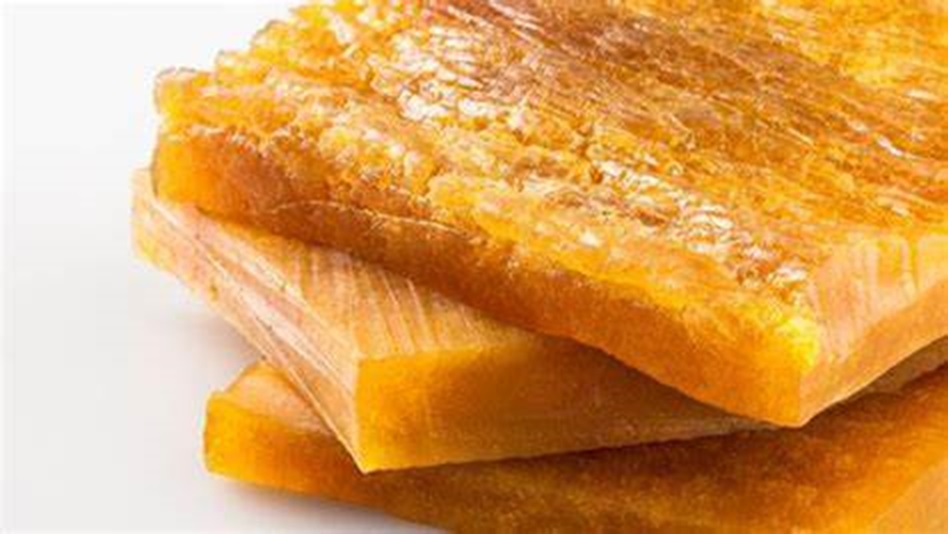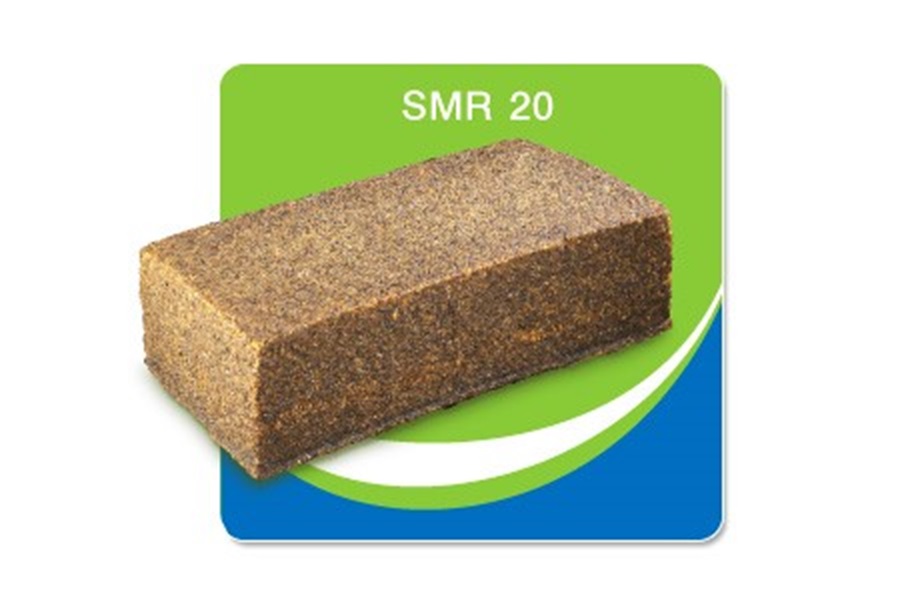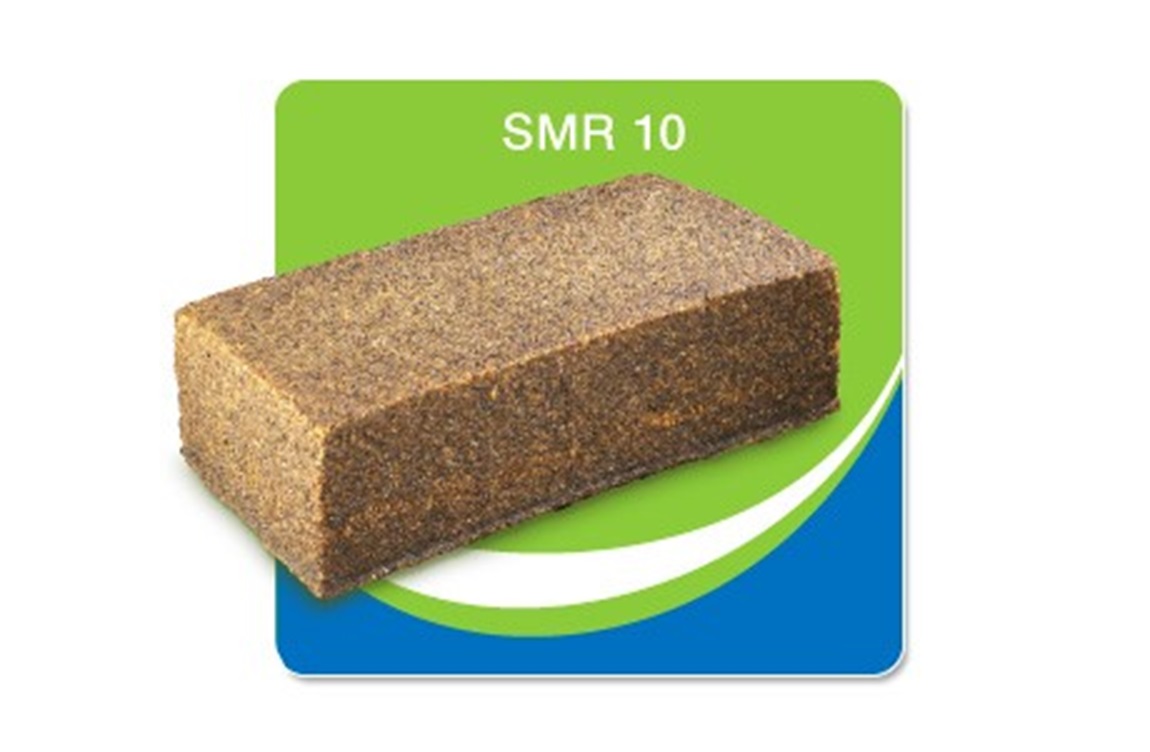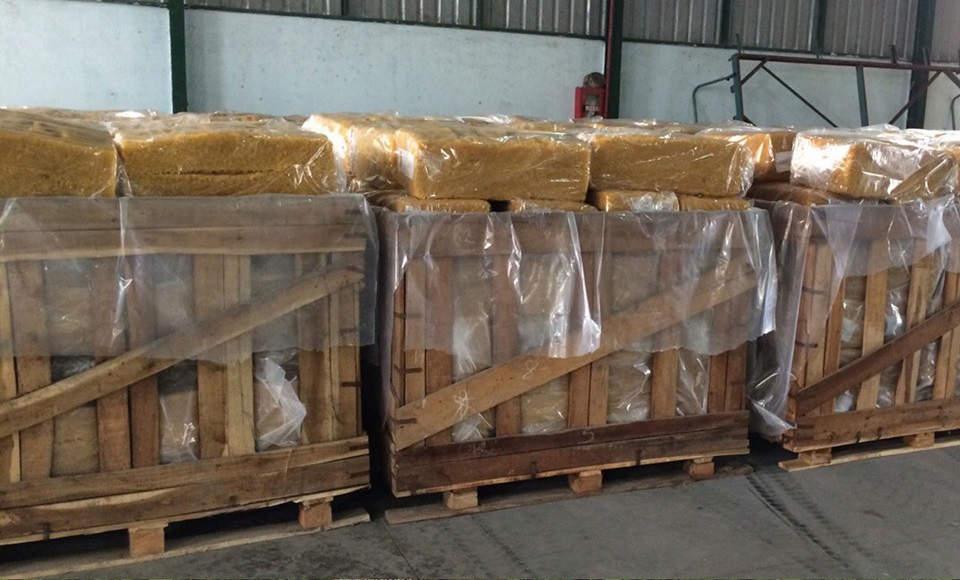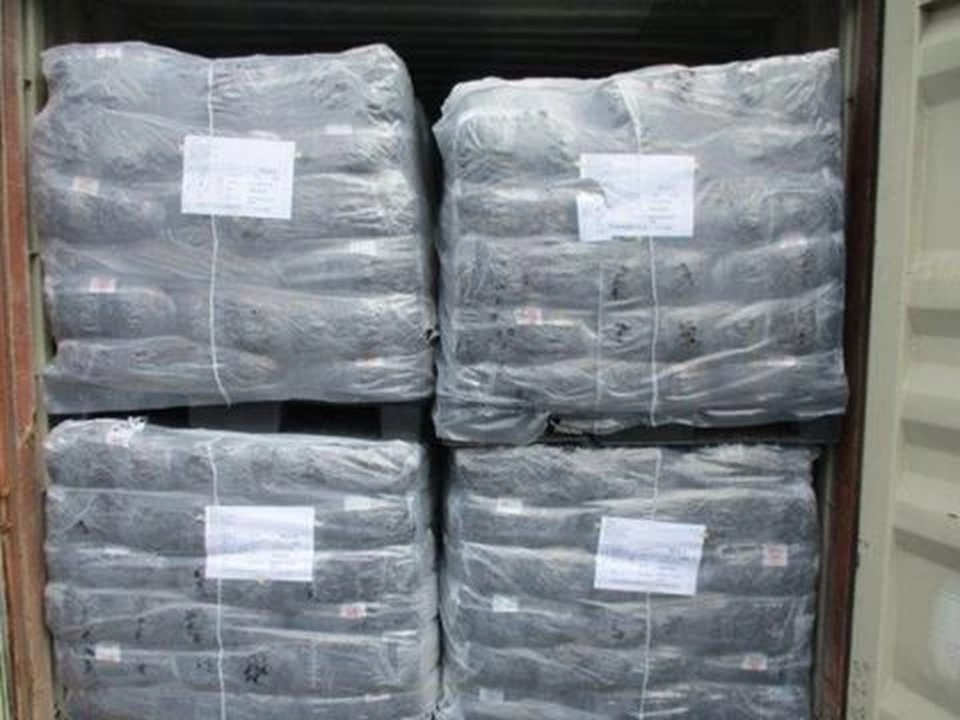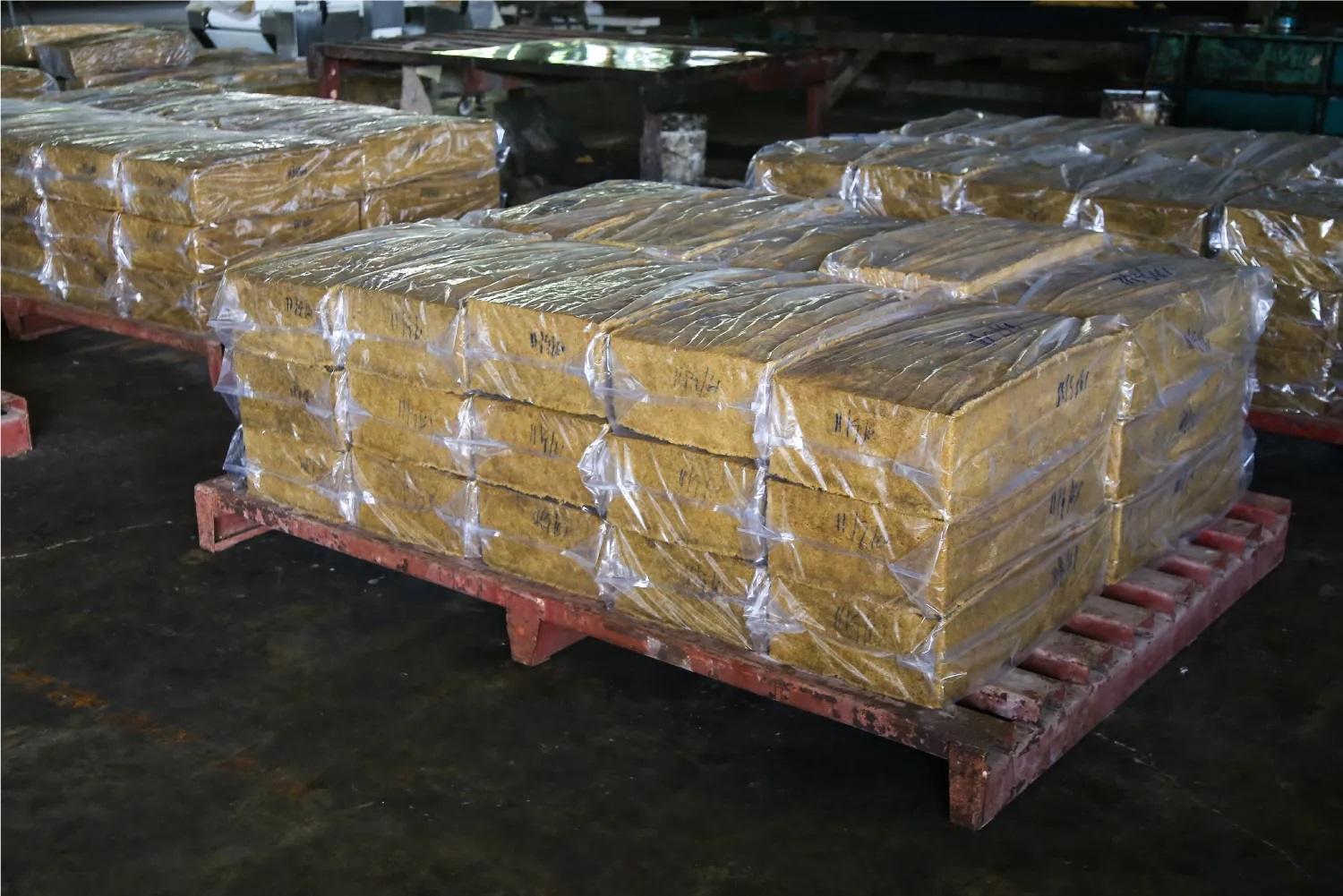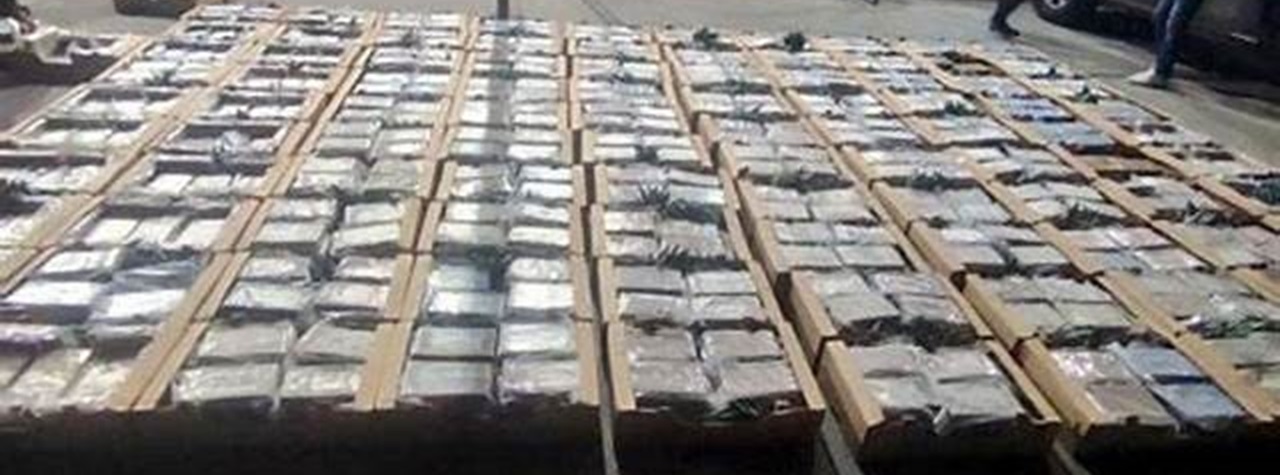We unleash your business potential by maximize the business innovation.
Send EmailStandard Malaysian Rubber, Naturel Rubber, SMR, SMR-3L, SMR-10, SMR-20, SMR-CV, SMR CV, SMR L, SMR 5, SMR 10, SMR 20, 9006-04-6
CAS Nr : 9006-04-6
Standard Malaysian Rubber (SMR):
Physical Properties
-
Appearance: White or light yellow solid
-
Density: 0.92 - 0.94 g/cm³
-
Melting Point: 180 - 220°C
-
Solubility: Insoluble in water, but soluble in organic solvents
Chemical Properties
-
Chemical Formula: (C₅H₈)n
-
Molecular Weight: Variable, depending on the degree of polymerization
-
Dirt Content: Maximum 0.16%
-
Ash Content: Maximum 1.00%
-
Nitrogen Content: Maximum 0.60%
-
Volatile Matter: Maximum 0.80%
-
Initial Plasticity (Po): Minimum 30
-
Plasticity Retention Index (PRI): Minimum 40
-
Mooney Viscosity: 60 ± 5 (ML 1+4 at 100°C)
These properties make SMR suitable for a wide range of applications, including tires, footwear, and industrial products.
Standard Malaysian Rubber (SMR) is a type of natural rubber classified according to technical specifications. Here are some key properties and uses:
General Properties
-
Dirt Content: Maximum 0.16%
-
Ash Content: Maximum 1.00%
-
Nitrogen Content: Maximum 0.60%
-
Volatile Matter: Maximum 0.80%
-
Initial Plasticity (Po): Minimum 30
-
Plasticity Retention Index (PRI): Minimum 40
-
Mooney Viscosity: 60 ± 5 (ML 1+4 at 100°C)
Uses
-
Tires: Widely used in tire production.
-
Footwear: Used for shoe soles and other parts.
-
Industrial Products: Used in gaskets, hoses, and other industrial items.
SMR is known for its high quality and clean latex standards, making it popular in the global market.
Standard Malaysian Rubber (SMR) is also known by several other names and classifications, depending on its grade and specifications. Here are some alternative names and classifications:
-
TSR (Technically Specified Rubber): SMR is a type of TSR.
-
SMR CV: Controlled viscosity grades of SMR.
-
SMR L: Light-colored grades of SMR.
-
SMR 5: A specific grade of SMR with certain properties.
-
SMR 10: Another grade of SMR with different properties.
-
SMR 20: A widely used grade of SMR known for its high quality and clean latex2.
These names and classifications help to identify the specific properties and uses of the rubber.
Standard Malaysian Rubber (SMR) is commonly known as "Malaysian Rubber". This name refers to the country of origin of the rubber and is widely used.
PRODUCT DETAIL
Grade: SMR 10 & SMR 20
Packing: 35kg per bale/ 1260 kg per pallet
Packing material/ type: Wooden pallet/ Shrink Wrapped
Standard Malaysian rubber 20 (SMR20)
SMR20 is a revolutionary change in the grading and presentation of natural rubber in the struggle with synthetic rubber. Hence the SMR20 scheme has a crucial role to play in the process of securing the status quo which natural rubber had been enjoying before the establishment of the synthetic industry. SMR20 is fast becoming a household word both among natural rubber (NR) producers and consumers.
It was first introduced as the result of a long felt need to improve the system of quality grading and presentation of Malaysian natural rubber NR. Formally launched by the minister for commerce and industry in 1965, the SMR20 scheme has , over the years, establishment full buyers confidence in the technical grading system adopted and consumers have unreservedly accepted the improvements in the presentation of SMR20.
Prior to the advancement of the SMR20 scheme natural rubber was only available in the conventional form of the sheets and creeps. The only method of grading was by visual appraisal. Color is the main concern of the producers. Hence the visual method of grading , Created many different classes and types and crepe rubber. As a result, buyers lost confidence in natural rubber because there is no guarantee of uniform quality and properties between the grades. Presentation is the accrued rubber itself, often viewed as the pool relative.
| Parameter Unit | Unit | SMR CV50 |
SMR CV60 |
SMR L |
SMR 5 |
SMR GP |
SMR 10 |
SMR 10CV |
SMR 20 |
SMR 20CV |
| Dirt (max) | % wt | 0.02 | 0.02 | 0.02 | 0.05 | 0.08 | 0.08 | 0.08 | 0.16 | 0.16 |
| Ash (max) | % wt | 0.50 | 0.50 | 0.50 | 0.60 | 0.75 | 0.75 | 0.75 | 1.00 | 1.00 |
| Nitrogen (max) | % wt | 0.60 | 0.60 | 0.60 | 0.60 | 0.60 | 0.60 | 0.60 | 0.60 | 0.60 |
| Volatile Matter (max) | % wt | 0.80 | 0.80 | 0.50 | 0.80 | 0.80 | 0.80 | 0.80 | 0.80 | 0.80 |
| Po (min) | % wt | NA | NA | 35 | 30 | NA | 30 | NA | 30 | NA |
| PRI index (min) | 60 | 60 | 60 | 60 | 50 | 50 | 50 | 40 | 40 | |
| Lovibond Color: individual value (max) | NA | NA | 6.0 | NA | NA | NA | NA | NA | NA | |
| Lovibond Color: range (max) |
NA | NA | 2.0 | NA | NA | NA | NA | NA | NA | |
| Mooney Viscosity (ML, 1, 100°C) |
50 | 60 | NA | NA | 65 | NA | ||||
SMR 20 (Standard Malaysian Rubber 20) are natural rubbers graded by technical specifications, not by the conventional visual standards. SMR20 represent very high quality, clean latex grades of natural rubber. This product is known as one of the most valuable types of natural rubber in the world, which has attracted a wide market due to its organic nature and high elasticity. This natural rubber indicates very high and pure latex standards, which has the highest quality and the best features. This category of natural rubbers has been tested many times in industry and its quality and viscosity are carefully controlled , here is properties of Standard Malaysian Rubber (SMR20
|
Property |
SMR20 |
|
Dirt content (% max. on 40 mesh) |
0.20 |
|
Ash content (% max.) |
1.00 |
|
Nitrogen content (% max.) |
0.60 |
|
Volatile matter (% max.) |
0.80 |
|
Wallace platicity Po (min.) |
30 |
|
Plasticity retension index (% min.) |
40 |
Standard Malaysian GP (SMRGP)
This is another viscosity-controlled natural rubber (66 +/- 6 mooney viscosity) that is extremely price competitive with specifications similar to Standard Malaysian Rubber 10 (SMR 10). Thus, using the Standard Malaysian Rubber GP (SMR GP) eliminates the price advantage of Standard Malaysian Rubber 10 (SMR 10) over Standard Malaysian Rubber CV60 (SMR CV60). You then have the cost of Standard Malaysian 10 (SMR 10) with the processability of a CV60. One-pass mixing with Standard Malaysian Rubber GP (SMR GP) bale rubber is excellent compared to bale Standard Malaysian Rubber 10 (SMR 10) one-pass mixed. Carbon black dispersion is much better; mooney viscosity is lower; and mooney scorch is lengthened. A single-passed batch was run using Standard Malaysian Rubber GP (SMR GP) and one with Standard Malaysian Rubber 10 (SMR 10) with the following results. Standard Malaysian Rubber grade SMR 10 and Standard Malaysian Rubber 20 (SMR 20) are technically specified natural rubber products derived from field coagulum or cup lump. These grades are commonly used in tire and automotive industry as well as in general moulded and extruded rubber products. Our Standard Malaysian Rubber (SMR) rubber is of the best quality due to our stringent quality control of the raw material starting right from our own plantation and processed with customer’s satisfaction in mind.
|
Rubber |
Compound viscosity ML 1+4/100°C |
Scorch 120°C, min |
Black dispersion Cabot rating |
Tensile/Elong MPa/% |
|
SMR GP |
58 |
18 |
C 1-3 |
26.0/545 |
|
SMR 10 |
72 |
16.0 |
H 1-3 |
24.5/510 |
Specification
|
Grades |
SMR CV (60) |
SMR L |
SMR GP |
SMR 10 |
|
Color Limit-loviband scale, max |
— |
6.00 |
— |
— |
|
Dirt Content, less than |
0.02 |
0.02 |
0.08 |
0.10 |
|
Ash Content, less than |
0.5 |
0.5 |
0.75 |
0.75 |
|
Nitrogen Content, less than |
0.6 |
0.6 |
0.6 |
0.6 |
|
Volatile matter, less than |
0.8 |
0.8 |
0.8 |
0.8 |
|
Plasticity Retention Index, % |
60.0 |
60.0 |
50.0 |
50.0 |
|
Wallace Rapid Plasticity Po, min. |
— |
35.0 |
— |
30.0 |
|
Mooney Viscosity: ML 1+4, 100°C |
55-65 |
— |
60-72 |
— |
Standard Malaysian Rubber 10
SMR10 are produced from stringently selected raw rubber materials sourced only from selected rubber plantation. In addition to the special attention focused on the selection of raw rubber material, the rubber manufacturing process is also intensively scrutinized to ensure that the final rubber produce not only meet with the stringent quality specification requirements of the standard Malaysian Rubber but also to ensure that the produce are of consistent quality throughout. With Pacidunia’s personnel having many years of experience in the handling of rubber produce and in particular, having sound technical knowledge of the properties of natural rubber, customers of Pacidunia would not only be assured of consistency quality, but also reliability in the supply of this produce as well. Dirt Content 0.20 % wt max ,ash content 1.00 % wt max , nitrogen content 0.60 % wt max, volatile matter 0.80 % wt max , initial Wallace plasticity 30.00 min , plasticity retention index 50.00 min , Mooney viscosity , color brown.
Specification of SMR10
|
Grades |
SMR CV (60) |
SMR L |
SMR GP |
SMR 10 |
|
Color Limit-loviband scale, max |
— |
6.00 |
— |
— |
|
Dirt Content, less than |
0.02 |
0.02 |
0.08 |
0.10 |
|
Ash Content, less than |
0.5 |
0.5 |
0.75 |
0.75 |
|
Nitrogen Content, less than |
0.6 |
0.6 |
0.6 |
0.6 |
|
Volatile matter, less than |
0.8 |
0.8 |
0.8 |
0.8 |
|
Plasticity Retention Index, % |
60.0 |
60.0 |
50.0 |
50.0 |
|
Wallace Rapid Plasticity Po, min. |
— |
35.0 |
— |
30.0 |
|
Mooney Viscosity: ML 1+4, 100°C |
55-65 |
— |
60-72 |
— |
|
Rubber |
Compound viscosity ML 1+4/100°C |
Scorch 120°C, min |
Black dispersion Cabot rating |
Tensile/Elong MPa/% |
|
SMR GP |
58 |
18 |
C 1-3 |
26.0/545 |
|
SMR 10 |
72 |
16.0 |
H 1-3 |
24.5/510 |
Standard Malaysian rubber SMR L
This is a very clean, light-colored rubber. To prevent enzyme darkening of the rubber, 0.05% of sodium metabisulfate is added at the latex stage. SMR L’s primary use is in colored compounds, especially light or bright colors. The clean, consistent rubber allows less colorant to be used as well as improving the batch-to-batch uniformity of the color (this week’s color will match one made 6 months from now. Non-color-specified rubber does not lend itself to this consistency). The low dirt, etc. also results in high quality physical properties as well. For strictly physical properties, most compounders might choose the slightly less expensive SMR 5 which is clean but not as good a color. However, it doesn’t make sense to carry two forms of the same product if SMR L will cover all requirements As most compounders know, use of a precrosslinked rubber, whether synthetic or natural, offers a variety of processing advantages. Precrosslinked natural rubber improves processing without impairing the finished physical or functional properties. In fact, blends with SBR will have improved physicals as is typical with NR addition to SBR while providing the smoother processing. The table below shows varying levels of PA-80 mixed with SMR L. Physical properties are consistent throughout. At 40 phr of PA-80, the extruder die swell has been reduced by 67%.
Specification
| Parameter Unit | Unit | SMR CV50 |
SMR CV60 |
SMR L |
SMR 5 |
SMR GP |
SMR 10 |
SMR 10CV |
SMR 20 |
SMR 20CV |
|
Dirt (max)
|
% wt | 0.02 | 0.02 | 0.02 | 0.05 | 0.08 | 0.08 | 0.08 | 0.16 | 0.16 |
|
Ash (max)
|
% wt | 0.50 | 0.50 | 0.50 | 0.60 | 0.75 | 0.75 | 0.75 | 1.00 | 1.00 |
|
Nitrogen (max)
|
% wt | 0.60 | 0.60 | 0.60 | 0.60 | 0.60 | 0.60 | 0.60 | 0.60 | 0.60 |
|
Volatile Matter (max)
|
% wt | 0.80 | 0.80 | 0.50 | 0.80 | 0.80 | 0.80 | 0.80 | 0.80 | 0.80 |
|
Po (min)
|
% wt | NA | NA | 35 | 30 | NA | 30 | NA | 30 | NA |
|
PRI index (min)
|
60 | 60 | 60 | 60 | 50 | 50 | 50 | 40 | 40 | |
|
Lovibond Color: individual value (max)
|
NA | NA | 6.0 | NA | NA | NA | NA | NA | NA | |
|
Lovibond Color:
|
NA | NA | 2.0 | NA | NA | NA | NA | NA | NA | |
| Mooney Viscosity (ML, 1, 100°C) |
50 | 60 | NA | NA | 65 | NA |
General Description of Malasian Rubber
Standard Malasian Rubber (SMR), caucho or caoutchouc, as initially produced, consists of polymers of the organic compound isoprene, with minor impurities of other organic compounds, plus water.
Thailand, Malaysia are two of the leading rubber producers. Types of polyisoprene that are used as natural rubbers are classified as elastomers.
Currently, rubber is harvested mainly in the form of the latex from the rubber tree (Hevea brasiliensis) or others. The latex is a sticky, milky colloid drawn off by making incisions in the bark and collecting the fluid in vessels in a process called “tapping”.
The latex then is refined into rubber that is ready for commercial processing. In major areas, latex is allowed to coagulate in the collection cup. The coagulated lumps are collected and processed into dry forms for sale.
Malasian Rubber is used extensively in many applications and products, either alone or in combination with other materials. In most of its useful forms, it has a large stretch ratio and high resilience, and is extremely waterproof.
About 70 per cent of natural latex is used for tires. Other products made of natural rubber are e.g. mattresses, condoms, shoe soles, hot water bottles, balloons, rubber boots and seal rings.
(SMR) can be substituted by synthetic rubber for some applications. Synthetic rubber is made from petroleum (i.e. fossil fuel). In many products – such as car tires – natural as well as synthetic rubber is used.
Malasian Rubber is one of the most important polymers for human society.
In some plants it also contains rubber., a milky liquid present in either the latex vessels (ducts) or in the cells of rubber-producing plants. Around 20,000 species of plants produce latex, but only 2,500 species have been found to contain rubber in their latex.
The biological function of rubber for the plants is not fully known. However, it has been shown that rubber can help plants to heal after they are damaged, by covering wounds and stopping the bleeding. This blocks the entry of harmful bacteria and viruses into the plants.
The properties of rubber include high strength and the capability to be stretched many times without breaking. Natural rubber compounds are exceptionally flexible, good electrical insulators, and are resistant to many corrosive substances.
Rubber is obtained from the leachate of more than 400 species of plants, and most of the world’s rubber is produced from a Brazilian tree more than 35 meters high called “Hawa brasilincis”.
now Malaysia in Southeast Asia has the largest resources of natural rubber in the world. Rubber or synthetic rubber was first produced on an industrial scale during World War II.
Since then, significant advances in the synthetic rubber industry have led to the production of quality products in this field. Since the mid-1960s, the production of synthetic rubber has been much higher than the production of natural rubber.
Synthetic rubber has had many applications in various industries such as the aircraft manufacturing industry due to its properties such as better resistance to chemicals, heat and oil than natural rubber.
